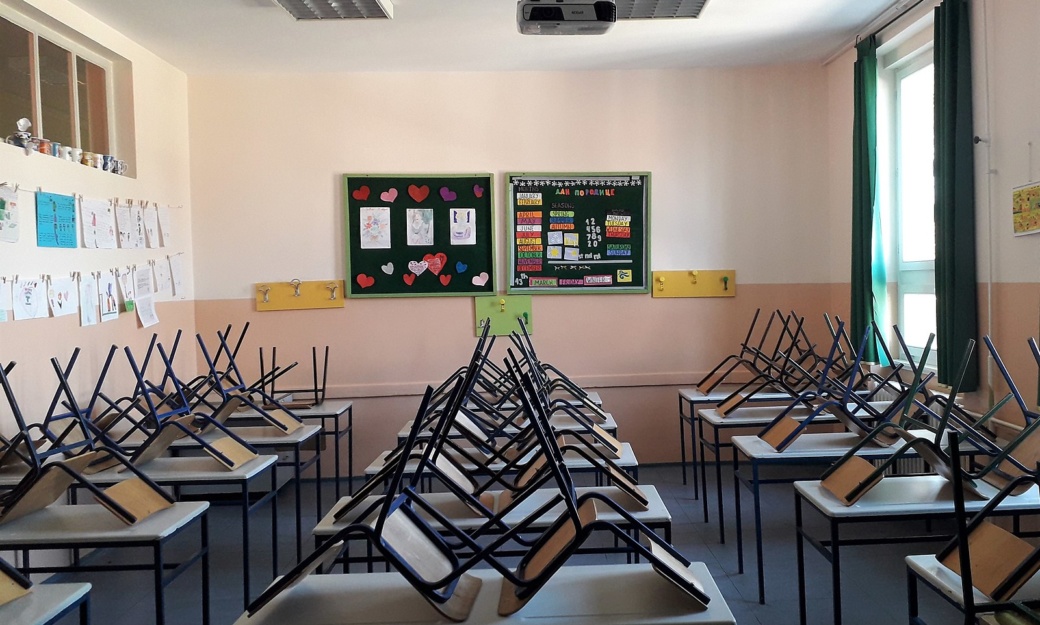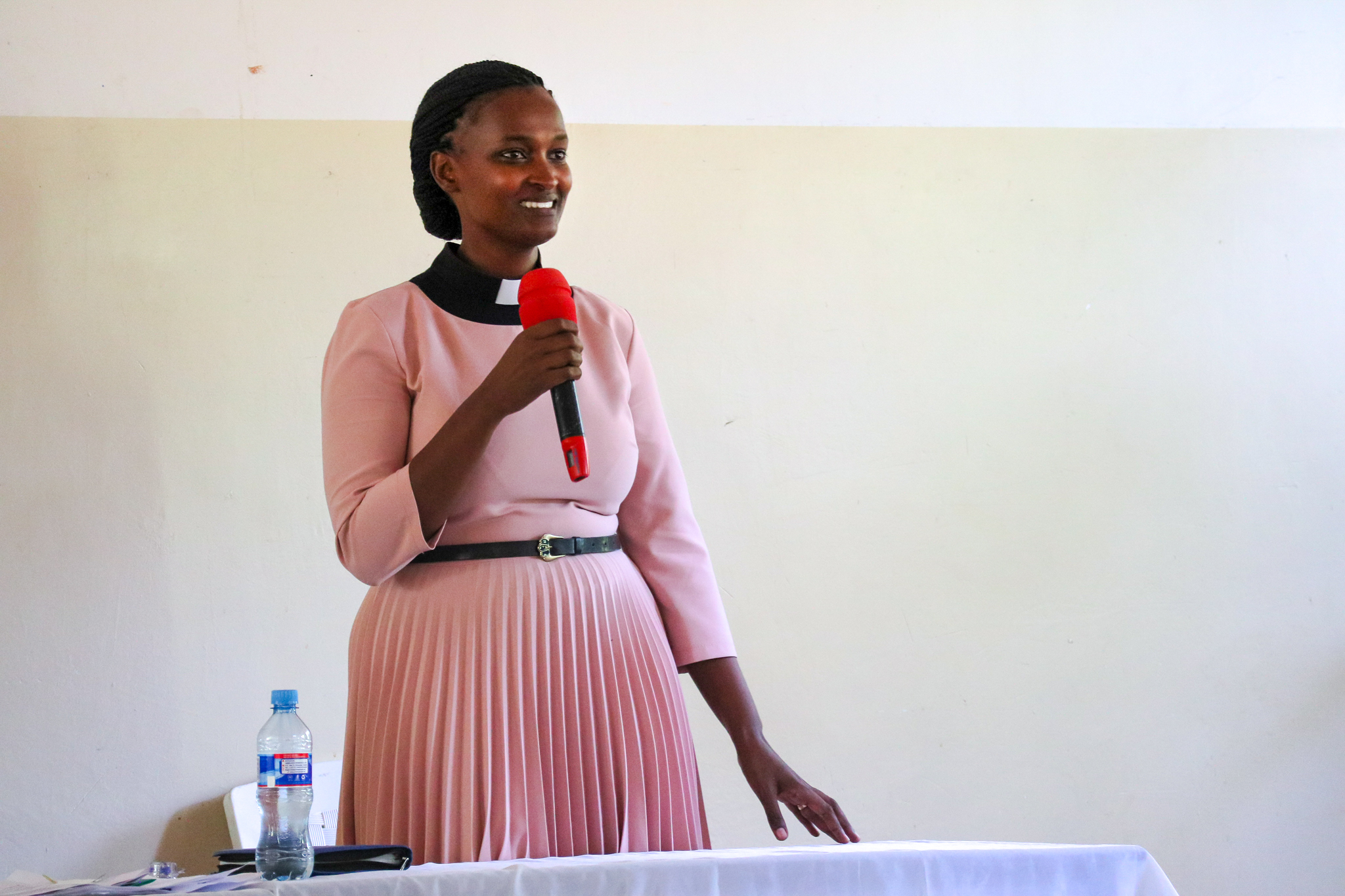Why COVID-19 School Closures Are Impacting Girls More

It took her seven years, but Kalpana (name changed) felt she was finally close to her dream of getting an undergraduate degree and working for the Indian government. She had given up college in the past due to family problems, but a few years ago re-enrolled in an undergraduate program. Her studies were going well and she even began preparing for India’s highly competitive civil services exams—women account for only 24 percent of those selected.
Then came COVID-19, shutting classrooms across the world and whisking away students from their school desks to online learning environments. The pandemic has interrupted and disturbed the education of over 90 percent of students worldwide. Students in low- and middle-income countries lack the proper equipment for and access to e-learning and teaching platforms. The situation is worse for girls, who face the double whammy of digital divide and gender inequities.
The UN has estimated that at least 1.5 billion learners were out of school at the peak of the pandemic. Out of these, 50 percent don’t have computers, 43 percent don’t have internet access, and 56 million are unable to use mobile phones because they are not covered by mobile internet. Of the 743 million female students that COVID-19 affected, 111 million live in the least developed countries.
Like many Indians, Kalpana did not have a computer at home. Nearly nine out of 10 Indians do not have one, and nearly three-fourths of the population do not have internet access. Only 13 percent of Indian women have the skills to operate a computer, compared to 20 percent of men. Only 15 percent of women know how to use the internet, compared to 25 percent of men.
Many students are dependent on smartphones and mobile data to continue their education online. However, there is a huge gender gap in mobile phone ownership and access to mobile internet, which means that many women are dependent on their families to give them access to devices. “I used my husband’s smartphone to attend two to three online classes,” Kalpana said. Sandhya Sharma, who teaches history at a women’s college in Delhi, became worried when male names and profile photos popped up on her screen during her online class. “I realized later that some students were using their brother’s or father’s devices and email accounts to log into the Google hangout class,” she said.
In low- and middle-income countries, 165 million fewer women than men own mobile phones, and 300 million fewer women are connected to the internet on their phones. In sub-Saharan Africa, 56 percent of men use the internet on their mobile phones, while only 35 percent of women do, representing a gender gap of 37 percent; in South Asia, it’s 68 percent of men and 34 percent of women—a whopping 51-percent gender gap—according to the Mobile Gender Gap 2020 report conducted by an industry group.
Kalpana feared that she may have to drop out for the year if exams are conducted online. “How can I write three-hour long exams and upload the PDFs through mobile? If there is a slight problem in the network and I am unable to upload PDFs, then years of my hard work will go to waste,” she said. “My family will not support my education for another year if I don’t clear the exams this year.” She ended up taking four exams of four-hours each in an internet cafe for $14. Recently, she bought a smartphone for $165 on monthly installments, even though her husband’s salary has been reduced due to the economic downturn because of the pandemic, and she can't afford it. “But if I want to continue studying, getting this was the last option for me,” she said. She now hopes to take the civil service exams in October.
But even for those who manage to get equipment and access to the internet, school closures have meant that they have lost whatever little space they had away from their home environment. “Many families have reinforced the habit of using the girls in household drudgery," said Latika Gupta, who teaches education at Delhi University. "Even the hardworking students complain that finishing the assigned reading is hard, as reading on a mobile screen is difficult and they are always busy in household work.”
Gupta said that college is a rare opportunity for many girls in conservative societies. “They have reached here after many struggles, sometimes they had to fight with families to study," she said. "I worry that this unique opportunity to develop intellectual skills is passing by them due to all these problems."
Similar fears of girls losing out on education, being overburdened due to domestic chores, and the possibility of dropping out, were expressed by educationists from other countries. In March, Ghana shut its schools just four days after the country recorded its first COVID-19 cases; by September cases numbered over 45,000. Rebecca Assan, a teacher in Ghana’s Mercy Islamic Junior High School, said out of 94 students in her class, only 39 were able to join a WhatsApp group she created during school shutdown to share learning material. “Most of the students in the group were boys.”
Assan fears that due to the economic hardship caused by the pandemic, many girls have to help their parents with work. "Usually, girls are expected to help, not boys.” Sarah, a grade-nine student at Assan’s school, said she wasn’t able to study during the closures as her family does not have a smartphone. “I have to spend a lot of time helping my parents when they go to the market to sell their wares,” she said.
Sarah is back at school, but many girls may not return to class, said Sally Ofori-Yeboah from CAMFED, an organization focusing on girls' education in sub-Saharan African countries. Sally said girls have taken to apprenticeship, trading and hawking things in the market. "Once schools reopen, we anticipate for all the parents who have put their children in apprenticeship or in programs just to earn money, most of these girls are not likely to come back,” she said. "We anticipate huge dropouts."
For girls with none or only some access to mobile phones, traditional mediums may have played an important role during the pandemic. Tanzania’s community radios and national TV aired educational programs during the shutdown, aimed at helping students who were not able to go online. TV and radio offered a possible way for girls to continue learning even while doing house work or taking care of younger siblings, said Mimii Brown Mziray, principal of Nyakato Bible School in Tanzania. The so-called alternative school calendar for upper primary classes in India also lists TV and radio among ways to learn at home and stay safe. In Latin America, UNICEF has helped local governments develop educational content for television and radio. In Finland, the state broadcaster began offering news and short educational programs in the languages of some of the country’s biggest immigrant groups, including Arabic, Kurdish, Persian and Somali.
The digital divide widens when gender intersects with other characteristics like age, education, location and income. There are many gender inequalities even in places with no digital gender gaps. For example, in Brazil, there’s hardly any difference in the percentages of mobile ownership of women and men, and according to a report by the OECD more women than men seem to be using mobile internet. Yet, girls who are cut off from the safety net of schools and women who are stuck at home during national lockdowns see the risk of domestic violence increase since they’re not able to leave the places where they are abused, a COVID-19 report on Latin America by CARE and UN Women found. “We live in a society that's full of sexism and patriarchal attitudes,” said Thiago Gehre, a professor at the University of Brasília. “COVID-19 is just showing us that, oh, it’s here.”

Mimii Brown Mziray, principal of the Nyakato Bible School which closed its doors in March 2020 in Tanzania.
Schools in Tanzania closed mid-March, one day after the government had informed the public about the country's first case of COVID-19. As schools were shut for over three months, access to education wasn’t the only worry educators and NGOs had. “I was talking to people who are also working in the community. And they told me that yes, it's true, a lot of girls got pregnant during the time of COVID,” said Mziray. Teen pregnancy is not only an issue during a pandemic, but COVID-19 has made the situation worse. Due to the financial stress coronavirus has brought, forced and arranged marriages also present an even greater risk to girls, as their families would have one less mouth to feed and get the bride price. Once married, girls most often don’t go back to school. “A married woman is going to stay at home and start having babies, and school is not a part of a married woman's life,” Mziray said. The risk of being kidnapped and married is why, Mziray explained, some of the country’s boarding schools, that for many are the only option after primary school, decided not to let girls go home. Instead, girls were allowed to continue living in the school dorms. Especially for poor girls, schools can be the only safe place, and secondary education acts as a shield towards early marriage. “When they are at school they are safer than being at home,” Mziray confirmed.
In addition to the risk of early marriage, girls returning back to their home villages face the risk of forced genital mutilation, said Virve Rissanen, Finnish Evangelical Lutheran Mission’s regional communications officer. According to Rissanen, in a pandemic parents don’t have to worry about the punishment from the school or the police, leaving girls more vulnerable. The Dutch children’s rights organization Terre des Hommes and the Hope For Girls Foundation both reported an influx of girls seeking protection from forced genital mutilations after schools closed. Globally, 2 million cases of forced genital mutilations will occur between 2020 and 2030 that without the pandemic could have been averted, according to projections by the United Nations Population Fund.
While many countries had technical infrastructure to support some form of distance education, studies show that on a broad scale, only a minority of countries have the basic infrastructure of distance learning in place. Tackling technical solutions is not the only solution to closing the digital divide—cultural and socioeconomic backgrounds have an impact. Elina Lehtomäki, professor of global education at the University of Oulu in Finland, sees the gender aspect of the digital divide as a real problem, but not a problem that just girls living in certain countries face. “We too might have families where there are three children, but only one device and the device goes to the son.” Lehtomäki noted that the possibilities girls have in accessing education can differ significantly inside a country with pockets of poorer and wealthier, urban and rural areas.
Based on data from the Ebola epidemic in Sierra Leone, the Malala Fund has estimated that even after the pandemic is over, 20 million more secondary school-aged girls could be out of school if dropouts increase by the same rate. UN estimates suggest that next year, 23.8 million more children could drop out or have no access to school. And a recent paper by Belinda Archibong of Barnard College and Francis Annan of Georgia State University found that there was a significant reduction in years of education for school-aged girls relative to boys following the 1986 meningitis epidemic in Niger. Experience from past health emergencies suggest that without measures to address the unique problems facing millions of girls across the globe, the pandemic could have a lasting impact not only on their education, but on many more aspects of their lives.
This article was written and reported by Columbia Politics Collective members Heena Kausar, Kirsti Karttunen and Javier Sauras.
 The Columbia Politics Collective is a global group of eighteen journalists from the Columbia Journalism School’s 2019-20 MA-Politics program. This is a series of dispatches on how the COVID-19 pandemic is functioning like a stress test, laying bare the strengths and weaknesses of political institutions around the world. Each article in the series will focus on a single underlying structure of government. Meet the journalists here.
The Columbia Politics Collective is a global group of eighteen journalists from the Columbia Journalism School’s 2019-20 MA-Politics program. This is a series of dispatches on how the COVID-19 pandemic is functioning like a stress test, laying bare the strengths and weaknesses of political institutions around the world. Each article in the series will focus on a single underlying structure of government. Meet the journalists here.

